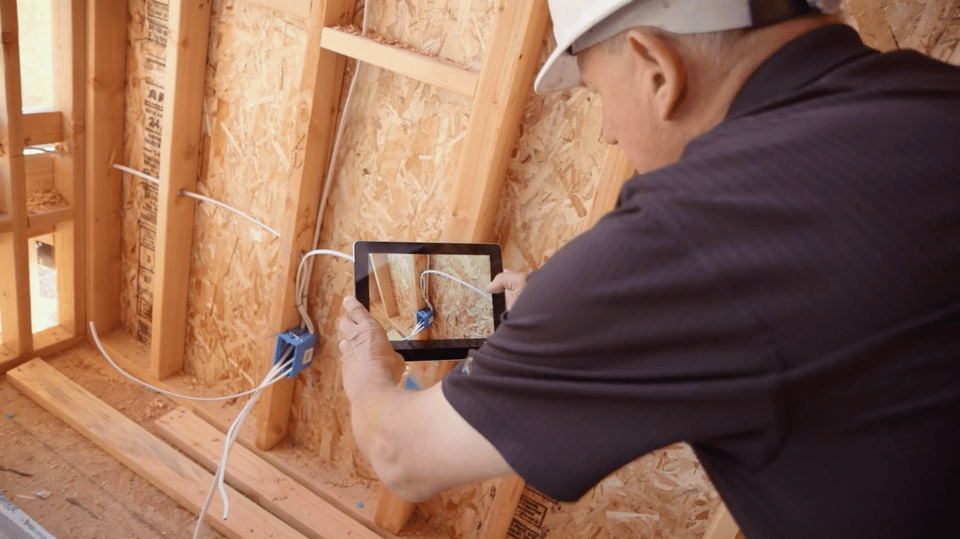Construction progress documentation is extremely important to all aspects and phases of a project. Progress documentation is like creating “the memory” of a project. Capturing the day-to-day and milestones of a project timeline can be very useful when it becomes necessary to look back to the future.
In this post, we look at
- The many ways in which progress documentation is used in construction projects
- How to document, capture and keep all progress documentation organized
- The value of the advancing technology available today
Why Project Progress Documentation is Important
One of the most common uses for progress documentation is to verify work completed in order to determine monthly payments. There are many other ways this discipline can support the entire lifecycle of a project.
Scheduling and verifying the completion of activities so that the next one can begin
Progress documentation is especially valuable in verifying a construction project schedule that shows the work sequencing for each activity, and the deadlines that need to be met. Activities on a schedule have different relationships with each other and sequencing of activities – especially those in the critical path – is crucial to completing a project. One activity must be verified as complete before the next one can begin. Progress documentation tracks the progress of the activity and ensures that the activity will finish on time. Once the progress of activity is understood, the schedule can then be assessed and adjusted to meet the required deadlines.
When analyzing and calculating percentages of completed activities for a sub-contractor, progress documents are reviewed to determine what was done, especially on a surety bond claim project. Usually, in these instances, the original contractor has been terminated. Progress documentation is relied on heavily to figure out what percentage of the job has been completed and where in the schedule work ceased, so the new contractor can begin work from that point. Progress documentation may also be valuable in determining if the original contractor was overpaid based on the actual percentage of the job that was completed.
Creating claims and for litigation
Progress documentation is especially useful when developing insurance claims. Documents are reviewed for a given event and the entire timeline is mapped to figure out where fault lies. Costs are calculated using photos and reports to show areas damaged or affected by certain events.
All contractors try to perform as smoothly as possible and hope a project never enters litigation, but some do. When litigation comes, the two parties will review project documentation to prove their side of the story.
Verifying quality of work for assurance and/or show noted deficiencies
Deficiencies happen on all construction projects, which is why many contractors have Quality Assurance programs. If the documentation is current, the records make deficiencies easy to fix. Project photos can show how work was installed and if it was installed correctly. If kept up, documentation can show which activities were done incorrectly or fall short of complete. While easier said than done, maintaining careful project documentation can save a lot of cost and even liability.
Complete and correct work is useful to document too. It shows that the job is being watched with a close eye, the subcontractor is getting done what they were hired to do, and the quality of the project is high. This can make the owner happy and build positive relationships with the client.
Multiple Mediums for Documenting Progress
Progress documentation comes in many forms. The three most common forms are
Daily reports
As the name indicates, daily reports should be done daily. These reports are created in real time and capture who, what, when, where and why something occurred.
- The “who” reflects who was on site that day, including manpower, management personnel, subcontractors and even other trades. By capturing “who” was on site, the report also captures who was not. This can be critical information if it becomes necessary to determine why work slowed down or if a safety incident occurred.
- The “what” encompasses the temperature and weather conditions that day, all work performed, equipment onsite, deliveries received, inspections scheduled and performed, deficiencies corrected, stoppages or delays and safety accidents or incidents that may have taken place. Prior or future weather conditions are also good to note to tell “why” specific work is being conducted on a given day, e.g. preparation work in advance of snow or rain.
- The “where” locates all the work performed that day. It should note where all equipment is onsite, deliveries received, inspections that took place, deficiencies corrected, and accidents or incidents occurred.
- The “when” notes dates, shift times and work hours. It is important to include all-important events that occur, especially safety accidents or incidences.
- The “why” states why certain or specific work is being done. For example, one activity is being done so that a certain milestone can be met, or a critical activity can start.
It is important to remember that someone may need to use the reports months later to reconstruct what happened. Daily reports should tell the story of the job and when preparing a notice or claim, these reports may be referenced to identify hindrances.
Photos
“A picture is worth a thousand words.” Photo documentation is essential. Photos should be taken of all major milestones of the project and every week. Clear, accurate and time-stamped photos are finite evidence to support any case, claim or discrepancy on a project. There can never be too many documentation photos.

Past E-mail correspondence is another progress documentation tool. Many employees don’t think about this. E-mail correspondence can be used to show progress. E-mails include questions being asked, and work being explained, which creates a timeline of where the project was at a given time. E-mails can also be used when a past event needs to be re-created. For all these reasons, it is very important to be careful when using E-mail, as these records never go away.
Technology Makes Project Progress Documentation Easier
The further along that a construction project advances, the more documentation accumulates. Construction software such as Procore and Projectmates is designed to keep everything organized and accessible. Procore is the most widely used construction software, while Projectmates is used specifically on government contracted projects.
Procore and Projectmates streamline construction processes by having all construction documents digitally in one place, made accessible with an easy search bar. Photos, reports, and various documentation can be uploaded and all project branches can access them via a cloud-based platform. These types of solutions are proven to save hundreds of hours on a project.
StructionSite is another great tool to keep photos organized and accessible. StructionSite verifies work put in place with a 360° camera that rapidly digitizes the jobsite onto construction plans. With StructionSite, work can be verified in place by date. It can be used to “walk the job” while in the office and travel back in time to review previous dates. This tool is extremely helpful in documenting the site for progress.
Progress Documentation: Do It Well for the Long Run
It can’t be said too many times: Construction progress documentation is extremely important in all aspects and phases of a project. These records are essential for the success of a project from day-to-day and even more valuable in the event of a dispute. While the quantity and complexity of collecting the information takes a large amount of work and coordination for accuracy and completion, the time invested provides efficiency and cost saving dividends in the long run.
To learn more about VERTEX’s Construction Claims and Project Management Consulting services, or to speak with an Expert, call 888.298.5162 or submit an inquiry.




